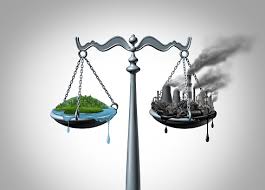
In order to understand what the environmental justice movement is and what issues it addresses, it is important to understand the concept of environmental justice. If you believe you are the victim of environment-based injustice, an environmental justice lawyer can help.
Understanding environmental justice
The U.S. Environmental Protection Agency (EPA) describes environmental justice as “the fair treatment and meaningful involvement of all people regardless of race, color, national origin, or income with respect to the development, implementation, and enforcement of environmental laws, regulations, and policies.”
The agency acknowledges that there is currently a disparity between communities and that not everyone has the same protection from environmental hazards and toxins. Equal access to the decision-making process is also lacking in minority communities.
This can make it challenging for people of color and other minorities to have a voice and actively participate in measures that could help make their living environment a healthy one.
What is the environmental justice movement?
The environmental justice movement started in the late 1960s by people who wanted to address the environmental hazards and dangers that impacted certain communities, namely those where people of color lived.
In the 1980s, studies such as “Toxic Waste and Race” confirmed that race played a large part when it came to living in proximity to toxic waste facilities and landfills. The report found a strong connection between race and the placement of toxic waste facilities. It was one of a few similar studies that helped mobilize the environmental justice group further.
The environmental justice movement evolves
In the early 1990s, mainstream environmental groups started recognizing the problem and focusing more on environmental justice. The Office of Environmental Equity was also established during that time, officially acknowledging the need for change. The office later changed its name to the Office of Environmental Justice.
Under Bill Clinton’s presidency, environmental justice became government policy. The administration adopted new policies designed to prevent discrimination in federally funded programs dealing with environmental issues.
Environmentalism and environmental justice
Environmentalism and environmental justice should not be confused, as they are fundamentally different. While environmentalism deals with the damaging effects that humans have on the environment in general, environmental justice deals with the unjust burden that overwhelmingly falls on minority communities.
Environmental justice has social justice at its foundation, and the civil rights movement provided heavy influence and inspiration. On the other hand, environmentalism is not primarily concerned with the effects of environmental destruction and harmful toxins on humans. It tends to focus on preserving and safeguarding flora and fauna, plants, and wildlife.
Similarities between environmentalism and environmental justice
The two movements do work together in some ways. Both aim to achieve a healthy environment and clean water and air for humans and animals alike. The environmental justice movement simply wants to ensure that all humans receive equal treatment, regardless of their skin color, socioeconomic status, or nationality. The movement wants to distribute the environmental advantages as well as disadvantages equally.
To achieve its goal, the environmental justice movement leans on the philosophy and work of environmentalism in bringing to the forefront how the destruction of the environment and living close to toxic waste sites or industrial facilities adversely impacts humans, particularly people of color, according to the Internet Encyclopedia of Philosophy (IEP).
Environmental justice and environmental racism today
You may wonder whether the environmental justice movement is still relevant today. Unfortunately, although the fight for environmental justice has been ongoing for about 60 years, it is not over yet. Even today, communities where people of color and other minorities live suffer from environmental disadvantages to a much higher degree than white and affluent communities.
According to The Atlantic, environmental racism persists in today’s America. People of color and those living in poverty are more likely to breathe polluted air as well as live near polluters. According to the study referenced by The Atlantic, Black people suffer up to 1.5 times more exposure to harmful particulate matter than white people. Lead poisoning may also disproportionately affect Black people more than those living in predominantly white communities.
Unfortunately, between 2016 and 2020, the federal government has walked back environmental protections. When we relax environmental protections, underprivileged communities suffer the worst effects, as they are more likely to live close to toxic sites and inner-city environments where traffic pollution is at its highest level. Arguably, the environmental justice movement is needed more than ever to address the unacceptable fact that your color or socioeconomic status can still determine your living environment.
Environmental justice today
In 2022, the Supreme Court restricted the EPA’s ability to restrict and regulate the carbon emissions that cause global warming. As NPR reports, this 6-to-3 decision could have dire consequences for any of the government’s future attempts to stop climate change and protect the minority and disadvantaged communities that suffer most from it.
U.S. Marines Faced Environmental Injustice
Even as environmental justice activists struggle to deal with these new developments, old acts of environmental injustice remain an issue. For over 30 years, Marines and their families stationed at Camp Lejeune were exposed to contaminated water, leaving many with lifelong health issues. Many are still seeking healthcare benefits to help them live with these issues.
Given these factors, promoting environmental justice can be an exhausting endeavor. Remember that you are not alone: connect with other activists in your area to advocate for cleaner air and water and to give underprivileged citizens a say in what happens in their neighborhoods. If environmental injustice has impacted you, consider hiring an environmental justice attorney to sue on your behalf or guide you through the process of joining a class action lawsuit.
Ben Crump Law, PLLC fights injustice
We passionately fight for your right to live and raise your children in a safe and healthy environment. We believe that any racial injustice has no place in today’s America, including environmental racism and injustice.
If you have experienced environmental injustice and your loved ones or your entire community suffered harm as a result, you may have legal recourse and could hold those responsible to account. Call Ben Crump Law, PLLC, today for a free case evaluation with one of our team members.




